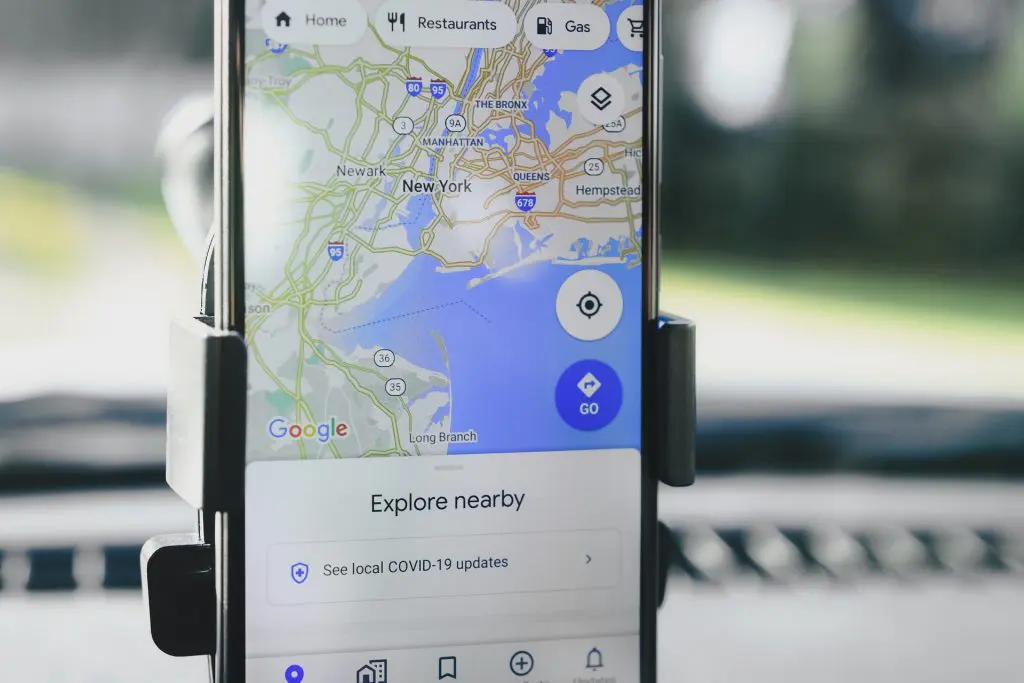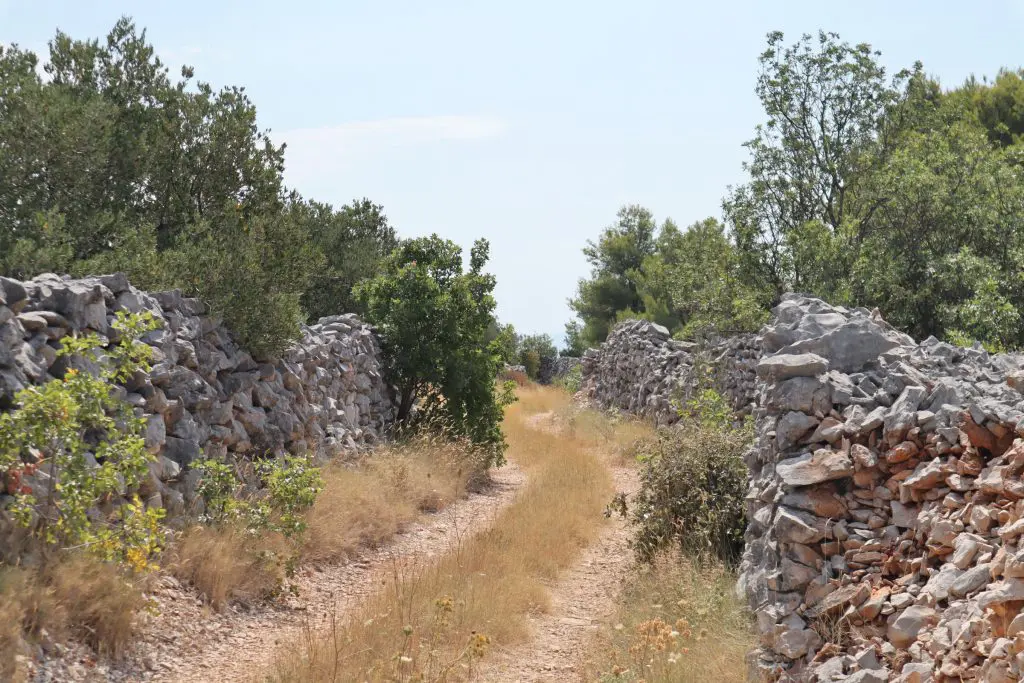Getting around Croatia is easy if you know how, but it isn’t always just about firing up the GPS or Google Maps and blindly following its directions. In this section of our road-tripping Croatia guide, our experts Lidija and Josipa give us the low-down on everything navigation-related.
Should you rent a GPS?
Lidija: Having some form of navigation is essential. If you’re just taking highways and main roads between destinations you’ll find them to be well marked, but local roads can be less informative.
Josipa: If you decide to rent a GPS unit with your rental car and aren’t familiar with how they work, we suggest asking the rental car agent to show you how it works, otherwise you might have issues if traveling cross country since the GPS sometimes resets to basic set up by default after crossing borders. This means you will need to re-enter the correct data about your prefered country, town and exact hotel address again by yourself.

What about using Google Maps, or Waze? Maybe a dedicated GPS app?
Lidija: If you want to use an online GPS like Google Maps, Apple Maps or Waze, you’ll need a data plan, either a roaming plan from your own provider or a local SIM with data. WIth either of these options, beware of daily data caps and do everything you can to reduce data usage, using the basic map view rather than satellite view, and pre-loading directions when you have wifi. Doing this usually works out cheaper than renting a GPS unit, and has the advantage that you’re already used to it.
A dedicated GPS app like Sygic or Tomtom functions uses less data because it works mostly offline. Such apps only connect to the internet for traffic data and updates, but you have to remember to download the maps when you have wifi for any countries you’re driving in. If you choose this option you could try the app out at home first to get familiar with the interface. If you opt to use your phone, bring a phone holder with you, either one that fits on the vent on the dash, or with a suction cup on the windscreen. And a charger! Navigation apps keep the screen on the whole time, which will kill your battery.
But are GPS directions always reliable?
Lidija and Josipa: not always!
Lidija: If you plan to drive on local roads, it is also a good idea to ask your local contact about it in addition to using GPS. Why? GPS theoretically gives you the shortest possible route, but there are a lot of roads in the area which are poorly maintained and really shouldn’t be driven on. Google and other GPS providers often aren’t aware of the road condition however. The mileage is shorter but the driving time is longer and in some cases dangerous.
Plitvice to Rovinj, the long way
Lidija: For example, if you want to take a local road from Plitvice to Rovinj instead of a highway, there is a good one, called Licka Magistrala, very scenic with some nice restaurants on the way (no gas station though). However, GPS will show you the (miles wise) shortest way which is basically a dirt road consisting of mostly very sharp curves on a quite steep rise, wide enough for just one car and bad visibility. This one goes over the mountain of Velebit, one of the tallest mountains in Croatia, and while views are breathtaking, so is the drive and not in the good way (I made this mistake myself, so be smarter).
Josipa: I once had guests who decided to go with GPS guidance from Dubrovnik to Kotor. They had a paper map as well, and I showed them the coastal road to get there, but GPS showed them the shorter way and they decided to use it (understandably). Long and stressful story short, they arrived in Kotor 3 hours after they were supposed to, via a road that hasn’t been in use for 10 years at least. They literally had to remove huge rocks so the car can pass, and our associates in Kotor were baffled at how they even found this road and how they managed to pass through it.

These things do not happen often, but they do sometimes, so just don’t be afraid to ask, either your local contact, or, if you see the road is getting worse, the first local you see. Remember, GPS is not smarter than you and it doesn’t have eyes and mouth to ask. I learned this the hard way, landing in a few corn fields and meeting some new friends by driving into their yard from nowhere, but you don’t have to 🙂
How good is signage generally? What do Croatian road signs look like? Are house numbers in a common format?
Josipa: We can’t stress enough how Americans are literally amazed with Croatia’s highway and its signage. No wonder since it was built only a few years ago. Of course local roads are a bit older, however the majority of the state roads also have fairly good signage.
Lidija: There are regular updates on road conditions displayed on electronic signs on highways as well, both in English and Croatian, so you’re good. On HRT 2 radio they have good music and also traffic updates in English (and few other languages if you wish to practice) so it is a good idea to have it on while driving.
Local roads are not as fancy and well marked, but there will be signs for villages and cities, just not as often. {Ed: from my own experience, on local roads only the next town and major towns are signposted. Maybe it’s assumed that locals know where places are in relation to those, and you won’t see signs to smaller towns until you’re almost there.) Signs are in a common universal format, very similar to USA ones or standard European ones.
Once you arrive in a place looking for your stay/restaurant/something else, the general rule is the more south you go, the more complicated this gets. Zagreb and Istria area are really well marked with signs for neighbourhoods, clearly displayed street names and in general wider flatter roads. Once you go south to Dalmatia; Zadar, Split, Dubrovnik, this gets a bit of a challenge, since some streets are clearly marked, some are not, house numbers are in a different format and not always where they’re supposed to be. However, none of these towns are very big and locals are friendly so no worries, you’ll find what you’re looking for. Also, each and every town/city has signs leading you toward the centre and ferry port, so you’ll for sure get close by and the rest is not that hard.
Joispa: The majority of Croatia’s towns have historical cores free from cars therefore you should pay more attention when driving in towns. It would not be smart to rely only on road signage when driving in towns since it might get a bit confusing. What happened more than a few times was that our guests made several circles around their hotel, they didn’t realize they were close but couldn’t reach their final destination. They were looking for the hotel itself rather than following the ‘how to reach your hotel’ instructions. In these cases we would have the hotel assist by phone to navigate our guests to the final point. In any case there is always a solution and no need to worry since the majority of towns are relatively small.
Is it easy to get around if you don’t speak Croatian?
Josipa: Croatians are in general good with English, so it’s very easy to get around. The country has a lot of visitors yearly so most signs are both in Croatian and English, and usually a few more languages. As already said, informational signs on the highways have English versions, and warning signs are in both languages as well (if something is forbidden, allowed, and similar). Instructions and info on pricing for the parking spots are both in Croatian and English. If you’re unsure, you can always ask a local; 90% of people under 70 will be able to help you in English.